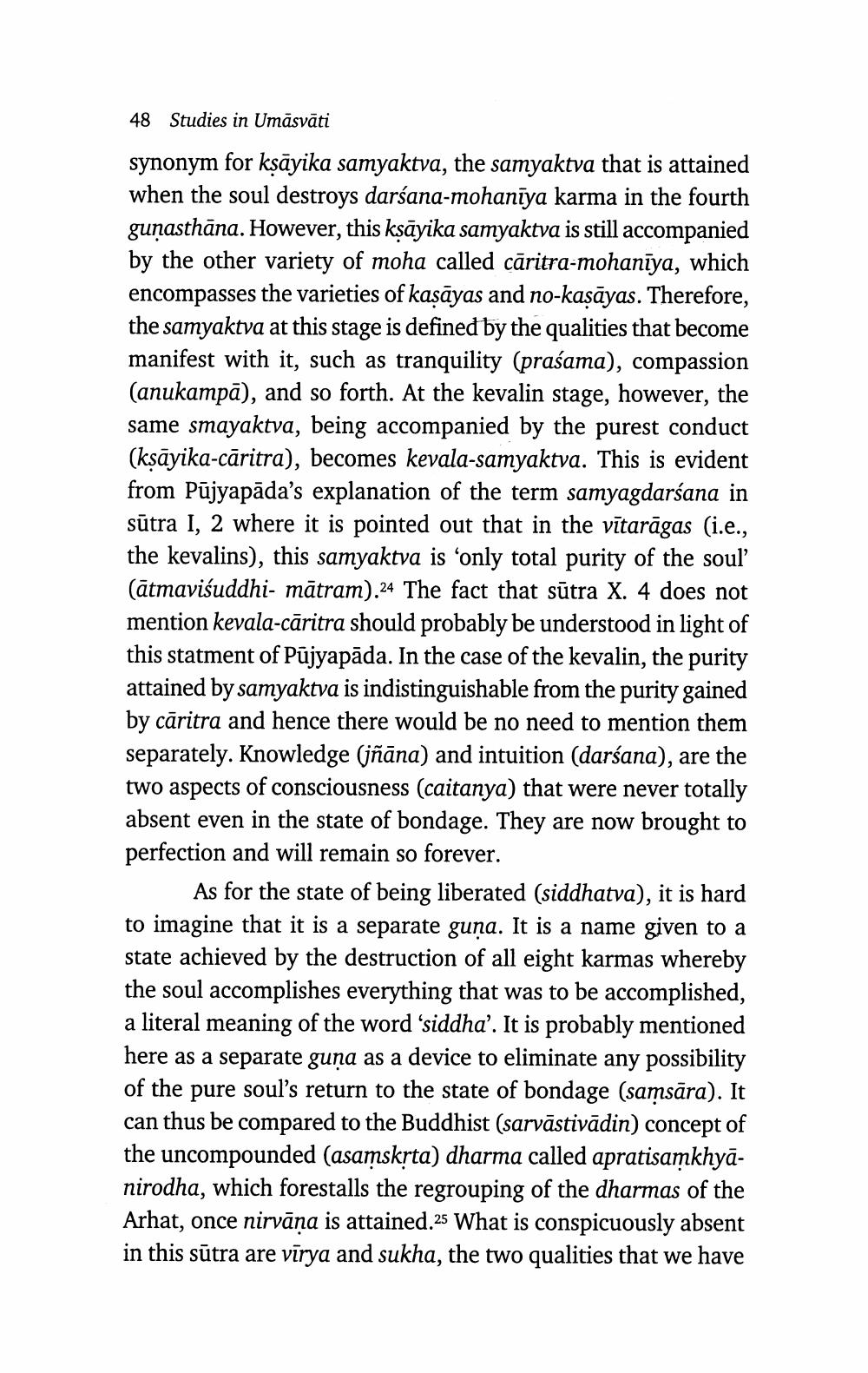________________
48
Studies in Umāsvāti
synonym for kṣāyika samyaktva, the samyaktva that is attained when the soul destroys darśana-mohaniya karma in the fourth gunasthāna. However, this ksāyika samyaktva is still accompanied by the other variety of moha called cāritra-mohanīya, which encompasses the varieties of kasāyas and no-kaşāyas. Therefore, the samyaktva at this stage is defined by the qualities that become manifest with it, such as tranquility (praśama), compassion (anukampā), and so forth. At the kevalin stage, however, the same smayaktva, being accompanied by the purest conduct (ksāyika-cāritra), becomes kevala-samyaktva. This is evident from Pūjyapāda’s explanation of the term samyagdarśana in sūtra I, 2 where it is pointed out that in the vītarāgas (i.e., the kevalins), this samyaktva is ‘only total purity of the soul? (ātmavisuddhi- mātram).24 The fact that sūtra X. 4 does not mention kevala-cāritra should probably be understood in light of this statment of Pūjyapāda. In the case of the kevalin, the purity attained by samyaktva is indistinguishable from the purity gained by cāritra and hence there would be no need to mention them separately. Knowledge (jñāna) and intuition (darśana), are the two aspects of consciousness (caitanya) that were never totally absent even in the state of bondage. They are now brought to perfection and will remain so forever.
As for the state of being liberated (siddhatva), it is hard to imagine that it is a separate guna. It is a name given to a state achieved by the destruction of all eight karmas whereby the soul accomplishes everything that was to be accomplished, a literal meaning of the word 'siddha'. It is probably mentioned here as a separate guna as a device to eliminate any possibility of the pure soul's return to the state of bondage (samsāra). It can thus be compared to the Buddhist (sarvāstivādin) concept of the uncompounded (asamskrta) dharma called apratisamkhyānirodha, which forestalls the regrouping of the dharmas of the Arhat, once nirvāṇa is attained.25 What is conspicuously absent in this sūtra are vīrya and sukha, the two qualities that we have




